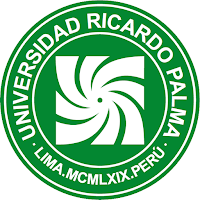"It inspires me with rage and whips me / and there is no way out of it": The prison experience and the foundation of a new time in César Vallejo's Trilce (1922)
"It inspires me with rage and whips me / and there is no way out of it": The prison experience and the foundation of a new time in César Vallejo's Trilce (1922) "It inspires me with rage and whips me / and there is no way out of it": The prison experience and the foundation of a new time in César Vallejo's Trilce (1922)
Article Sidebar
Main Article Content
Grober Omar Quichua Ayvar
Abstract
This article analyzes the human condition and the proposal of a utopian future in César Vallejo's Trilce (1922). To do so, firstly, the logic that prevails within the prison world will be exposed: tedium, violence and impossibility of establishing affective bonds with each other. Secondly, in conjunction with the above, starting from the figure of the mother and 16 Grober Omar Quichua Ayvar (2020). "It inspires me with rage and it whips me / and there is no way out of it" the dispossessed, Vallejo's political commitment to materialize a fairer way of living together in a society where the capacity to love and the right to dissidence is rescued will be addressed.
Article level metrics
Downloads
Metrics
Article Details

This work is licensed under a Creative Commons Attribution 4.0 International License.
La revista utiliza una licencia Creative Commons para mostrar a los lectores y a los usuarios cómo se pueden utilizar los contenidos publicados.
Los contenidos publicados en la revista están bajo una licencia CC-BY 4.0, la cual permite:
- Compartir, copiar y redistribuir el material en cualquier medio o formato.
- Adaptar, remezclar, transformar y construir a partir del material para cualquier propósito, incluso comercialmente.
Bajo los siguientes términos:
- Atribución. Usted debe dar crédito de manera adecuada, brindar un enlace a la licencia, e indicar si se han realizado cambios. Puede hacerlo en cualquier forma razonable, pero no de forma tal que sugiera que usted o su uso tienen el apoyo de la licenciante.
La información de licencia se muestra e incrusta en las páginas de artículos y en ficheros de texto completo como sigue:
«Este obra está bajo una licencia de Creative Commons Reconocimiento 4.0 Internacional».
Badiou, A. (2013). Sobre la idea del comunismo. Paidós.
Foffani, E. (2018). Vallejo y el dinero. Formas de la subjetividad en la poesía. Cátedra Vallejo.
González Vigil, R. (2009). El amor: la fórmula contra el dolor y la muerte. Dolor, cuerpo y esperanza en Vallejo (pp. 75-83). Fondo Editorial del Congreso del Perú.
Higgins, J. (2015). César Vallejo en su poesía. Cátedra Vallejo.
León, J. (2009). La esperanza en la poesía de César Vallejo. En Aguilar, S. y Grupo de Trabajo en Cultura del Congreso, Dolor, cuerpo y esperanza en Vallejo (pp. 143-158). Fondo Editorial del Congreso del Perú.
Prado Chirinos, J. (1992). Una carta desconocida de César Vallejo sobre su prisión en Trujillo. Lexis. Revista de Lingüística y Literatura, 16(2), 259-266. https://revistas.pucp.edu.pe/index.php/lexis/article/view/5721/5711
Romualdo, A. (2009). El humanismo de César Vallejo (pp. 23-37). En Aguilar, S. y Grupo de Trabajo en Cultura del Congreso, Dolor, cuerpo y esperanza en Vallejo. Fondo Editorial del Congreso del Perú.
Salazar, I. (2015). El hundimiento de lo divino en la poesía de César Vallejo. La poesía ante la muerte de Dios: César Vallejo, Jorge Eduardo Eielson y Blanca Varela (pp. 53-179). Fondo Editorial de la Pontificia Universidad Católica del Perú.
Salazar Bondy, S. (2014). Vallejo en su palabra. La luz tras la memoria. Artículos periodísticos sobre literatura y cultura (1945-1965) (t. I, pp.193-196). Lápix Editores.
Silva Santisteban, R. (2009). El dolor ante el sentimiento del tiempo en «Trilce II». En Aguilar, S. y Grupo de Trabajo en Cultura del Congreso, Dolor, cuerpo y esperanza en Vallejo (pp. 59-68). Fondo Editorial del Congreso del Perú.
Tello, O. (2018). El tema de la cárcel en Trilce [Tesis de maestría, Universidad Nacional Mayor de San Marcos]. https://cybertesis.unmsm.edu.pe/bitstream/handle/20.500.12672/10174/Tello_co.pdf?sequence=3&isAllowed=y
Vallejo, C. (2002). Obra poética. Peisa.
Vich, V. (2018). César Vallejo: dos poemas sobre tener hambre. Poetas peruanos del siglo XX. Lecturas críticas (pp. 33-44). Fondo Editorial de la Pontificia Universidad Católica del Perú. https://repositorio.pucp.edu.pe/index/bitstream/handle/123456789/174311/Poetas %20peruanos%20del%20Siglo%20XX%20lecturas%20cr%C3%ADticas.pdf?sequence=1
Vich, V. (2021). César Vallejo. Un poeta del acontecimiento. Editorial Horizonte.
Yurkievich, S. (1974). En torno de Trilce. En Ortega, J. (ed.), César Vallejo (pp. 245-264). Taurus.










